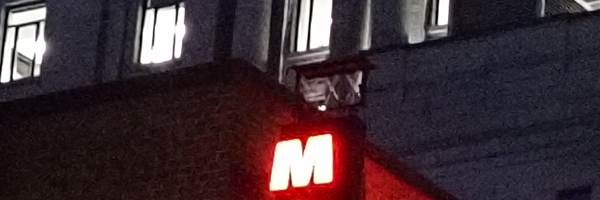Olympus OM-D E-M1 Mark III Review
Olympus OM-D E-M1 Mark III Introduction
As the newest Micro Four-Thirds Mirrorless Digital Camera from Olympus, the Olympus OM-D E-M1 Mark III is designed to fold most features introduced in the flagship E-M1X reviewed here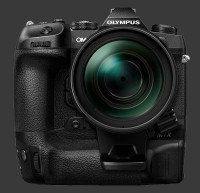
Olympus OM-D E-M1X down close to the size of the original E-M1. This new mirrorless features a revised 20 MP Four-Thirds High-Speed CMOS sensor paired with the latest TruePic IX processor. Together they can capture 60 FPS burst of full-resolution images in JPEG and RAW formats. The sensor offers a 121-Point Phase-Detect AF system builtin which is usable with all lenses.
Olympus improved the 5-axis image-stabilization mechanism in the E-M1 Mark III to compensate for up to 7-stops of camera shake. This new ultra-precise mechanism allows the formation of 80 MP images from 16 individual frames or 50 MP from 8 frames which is now possible handheld! Extending their Live-Bulb and Live-Time mode, a new Live-ND mode simulates extremely long exposures using Multi-Frame capture scenes for up to 5-stops longer.
The Mark III inherits most features of the E-M1 Mark II reviewed here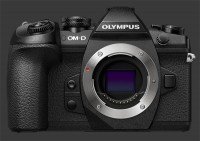
Olympus OM-D E-M1 Mark II with some refinements and trading customization points which still remain extensive. Bracketing features are class-leading with 5 types of bracketing and Focus-Stacking of up to 15 images, in addition to Focus-Bracketing for 999 frames. A mechanical shutter can handle 15 FPS and speeds of 1/8000s. Switching to an electronic-shutter, the E-M1 Mark III reaches 60 FPS and 1/32000s.
The OM-D E-M1 Mark III is truly a professional-grade mirrorless camera. It offers a large 0.5" EVF with 0.74X magnification, 100% coverage and an essential Eye-Start Sensor in an IPX1-rated weatherproof body that is also freezeproof body to -10C. A new focus joystick was added to an already impressive number of external controls, including numerous customizable buttons and dual control-dials.
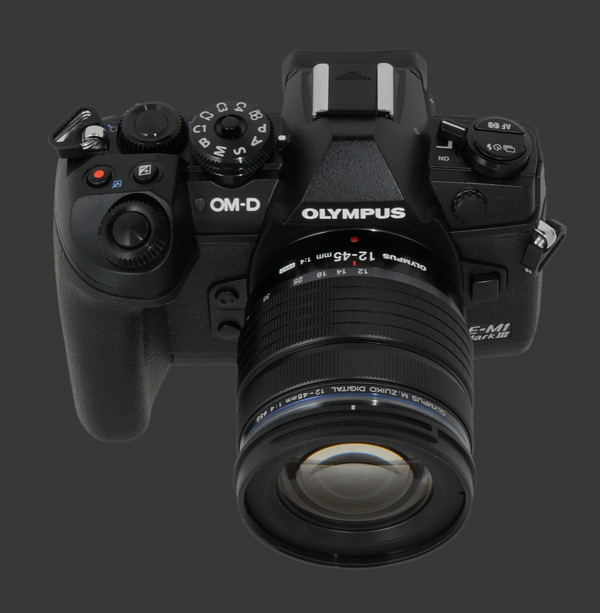
This digital camera review covers the performance and image quality of the Olympus O-MD E-M1 Mark III.
Olympus OM-D E-M1 Mark III Features
Sensor
- 20 Megapixels CMOS Four-Thirds sensor
- No Anti-Alias Filter
- Micro Four-Thirds lens mount
- Builtin Sensor-Shift Image Stabilization:
- 5-Axis
- 7-Stops efficiency
- 80 MP High-Resolution tripod capture
- 50 MP High-Resolution handheld capture
- Ultra-Sonic dust-reduction mechanism
Exposure
- ISO 200 - 25600 sensitivity, 1 or 1/3 EV steps
- Expanded Low ISO 64 and 100 sensitivities
- Auto ISO, customizable limit from 200 to 25600
- 1/8000 - 60s Mechanical Shutter-speeds
- 1/32000 - 60s Electronic Shutter-speeds
- 1/3, 1/2 or 1 EV steps Shutter-speed steps
- Bulb up to 30 minutes, Live-Bulb or Live-Time
- Live-ND mode, 1-5 EV (ND2 - N32)
- PASM Exposure modes
- Program-Shift in P mode
- EC: ±5, 1/3, 1/2 or 1 EV increments
- Exposure-Shift, ±1, 1/6 EV increments
- Multi-Segment, Center-Weighed, Spot, Shadow Spot and Highlight Spot metering
- Auto-Exposure Bracketing:
- 2, 3 or 5 Frames, max 1 EV steps
- 7 Frames, max 1/2 EV steps
- Built-in HDR, 2 blending levels
- Flash-Compensation, ±3, 1/3 or 1/2 EV steps
- Auto, Redeye, Forced, Off, Slow-Sync+Redeye, Slow-Sync, Rear-Sync and Manual flash modes
- Manual flash power between full and 1/64th power
- Remote-Control flash
Image Parameters
- AutomaticTwo types: Normal and Warm-preserving., 7 presetsSunny, Shade, Cloudy, Incandescent, Fluorescent, Underwater, Flash, Kelvin and Custom White-Balance, 4 memories
- White-balance fine-tuning along 2 axis in 15 steps
- One-Touch Custom White-Balance
- 5 Color and 1 B&W Picture Modes
- Adjustable Contrast, Sharpness and Saturation, 5 steps each
- Adjustable Gradation, Automatic or 3 levels
- Adjustable tone curve: Shadows, Midtones and Highlights, 15-steps each
- Optional High-ISO Noise-Reduction, 3 levels
- Optional Long-Shutter Noise-Reduction
- sRGB or Adobe RGB color space
Output Processing
- 4:3 Native aspect ratio
- 3:2, 16:9, 1:1 and 3:4 cropped aspect ratios
- JPEG, RAW, RAW+JPEG capture
- 4 JPEG Compression levels
- Optional Vignetting compensation
- Optional Keystone compensation
Focus
- Single-Shot (AF-S), Continuous (AF-C), Tracking, Preset and Starry Sky AF modes, all with optional Direct Manual-Focus (DMF)
- Manual Focus (MF) mode with optional Focus-Assist, 5-14X magnification
- 121-point Phase-Detect plus Contrast-Detect AF
- Auto, Single-Point, Assisted Point, 3x3 Points, 5x5 Point and 2 Custom Focus-Selection modes
- Focus Stacking:
- 3-15 Frames
- 10 Step Sizes
- Focus Bracketing:
- 3-999 Frames
- 10 Step Sizes
- Optional Face-Detect and Eye-Detect AF
- Optional Focus-Limiter
- Optional Bulb Focusing
- Optional Focus-Peaking
- Optional AF-Assist lamp
- Optional AF Fine-Tuning
- Optionally Infinity Focus Reset
Drive
- Electronic Continuous Drive:
- 60 FPS, 50 RAW files or JPEG images
- 18 FPS, 76 RAW files or 90 JPEG images
- Optional Pre-Buffering, Max 35 frames
- Mechanical Continuous Drive:
- 15 FPS, 101 RAW files or 134 JPEG images
- 10 FPS, 286 RAW files or Unlimited JPEG
- 8.5 FPS Anti-Shock Drive
- Interval Timer:
- Frames: 1-9999 frames
- Interval: 1s-24h
- Delay: 0-24h
- Live-Composite, Max 6 hours
- Multiple-Exposure:
- 2 Frames
- Optional Automatic Gain
- Optional Composition Overlay
- Self-timer, 2s or 12s or Custom
- Custom Timer: 1-30s, 1-10 Frames, ½-3s Interval
- Anti-Shock & Silent Shutter-Delay: 0-30s
Video
- 4096x2160 @ 24 FPS Cinema 4K
- 3840x2160 @ 30 FPS Ultra-HD 4K
- 1920x1080 @ 30 FPS All-Intra Video
- 1920x1080 @ 60 FPS Video
- Time Lapse Video:
- Resolution: 4K, 1080p, 720p
- Frame Rate: 5-30 FPS
- Max 999 Frames
- Quicktime H.264 Codec
- PASM video exposure modes
- Optional Audio Track:
- 96kHz @ 24 bits or 48kHz @ 16 bits
- ±10 Input Gain
- Optional Volume Limiter
- Optional Wind Noise-Reduction, 3 levels
- Stereo microphone builtin
- Stereo audio input mini-jack
- Stereo audio output mini-jack, 16 levels
Display & Viewfinder
- Builtin 0.5" EVF:
- 2.4 Megapixels
- 100% Coverage
- 0.74X Magnification
- Eye-Start Sensor
- Digital-level, 2-Axis
- Rotating 3" Touchscreen LCD, 1 Megapixels
- Optional Live-Histogram
- Optional guidelines, 6 types
- Adjustable brightness, 15 steps
- Adjustable color temperature, 15 steps
Controls
- Dual Control-Dials
- Focus Joystick
- Direct ISO button
- Control customization:
- 2 Control-Dials
- 7 Buttons
- 2 Directions of 4-way controller
- Dual-Mode Lever
- Customizable AE-L metering mode
Connectivity
- Hot-Shoe & Sync Port for external lighting
- HDMI 4K output
- USB 3.2 Type-C
Misc
- Weatherproof, IPX1-rating
- Freezeproof down to -10C
- Built-in WiFi
- Dual SDXC memory slots, 1 UHS-II
- Proprietary Lithium-Ion battery
Olympus OM-D E-M1 Mark III Capability - What can it do?
The Olympus OM-D E-M1 Mark III is one of the most feature-rich digital cameras to date. It offers all features needed by professional photographers and videographers plus quite a lot more. Its 20 megapixels anti-alias-filter-free sensor captures enough details for relatively large prints. The ISO 200-25600, expandable down to ISO 64, is similar to most interchangeable lens digital cameras and sufficient for photography in moderately low light. An improved 5-axis image-stabilization mechanism now compensates for up to 7-stop over hand-holding.
Take a look how sharp a handheld photo can be even at a 1s exposure, then click on the ISO/Shutter-Speed pair below to see the compromises possible:
Extremely large prints are possible using the latest Super-Resolution mode which produces an 80 megapixels image fused from 16 separate exposures. This results in lower image-noise as it averages out pixels in overlapping areas. New to the E-M1 series is a hand-held Super-Resolution mode that blends 8 exposures into a 50 MP image. Originally pioneered by Pentax, this mode takes advantage of natural camera shake to capture overlapping images with sub-pixel offset that get merged together into a very detailed image. These Super-Resolution modes are available from ISO 100 to 1600. Motion causes problems and there is a significant delay in capturing and producing the output though. The comparative crops page shows the results.
Its class-leading 1/32000s to 60s shutter-speed range can freeze ultra-fast motion as well as capturing light-trails. Longer exposures up to 30 minutes are possible using Bulb mode which features Olympus' unique Live-Bulb and Live-Time modes that makes it possible to see an exposure progress as it is captured. This makes it possible to photograph star-trails and is immensely useful when taking pictures of fireworks and light painting when exposure is impossible to predict. The Olympus OM-D E-M1 Mark III extends this technology to acquire one new feature, a Live-ND mode which can simulate an ND2 to ND32 filter for extremely long exposures.
Experimentation is made easy with the E-M1 Mark III by its extensive bracketing options. AEB is possible for 7 frames, while ISO, WB and Flash can be bracketed for 3 frames. While the Mark II introduced Focus-Bracketing, the Mark III can stack a focusing bracket of up to 15 images into an image with extensive depth-of-field. Automated HDR and preset HDR bracketing functions are also supported.
Here is the same scene captured handheld with every LiveND setting and without:

As expected, the E-M1 Mark III offers complete control over exposure with a choice of metering systems: Multi-Segment, Center-Weighed, Spot, Highlight Spot and Shadow Spot. These last two options have been exclusively available on Olympus digital cameras for a while. The work similarly to Spot metering expect using a highlight or shadow, respectively, to set the overall exposure. When not using an exposure-target, Highlight Spot is easier to use than traditional Spot since it is easier to guess what is a highlight than a mid tone. Every type of White-Balance is supported with Kelvin and Custom WB option for completeness. WB Fine-Tuning along 2 axis in 15 steps is available for further adjustments.
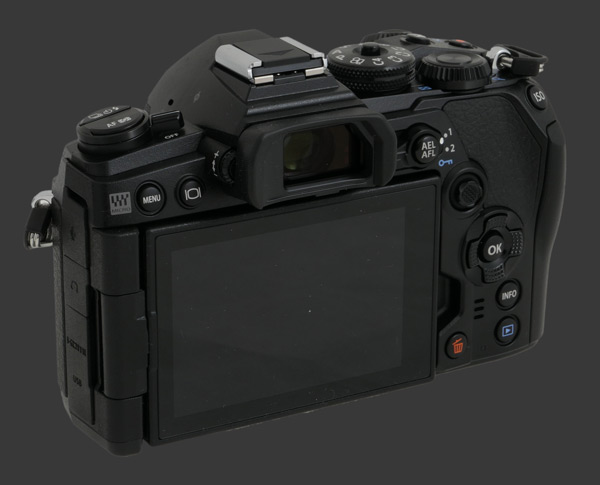
There was a huge leap in continuous shooting performance from the original E-M1 to the Mark II version and now the Mark III keeps the same performance level which is a best-in-class 60 FPS at full-resolution. This is too fast for the camera to autofocus and meter between each frame, so both focus and metering remain locked at the first frame down to 18 FPS. The mechanical shutter too delivers a very impressive 15 FPS burst-rate, all while continuously metering and auto focusing between frames. This speed puts the E-M1 Mark III well into action photography territory.
Supporting this exceptional speed is a hybrid autofocus system which combines Phase-Detection and Contrast-Detection AF at 121 points. Focus is extremely quick and accurate at all points. The Olympus OM-D E-M1 Mark III introduces a new Starry Sky AF mode designed for astro-photography. Since focusing is performed on-sensor, this digital camera offers a large number of focusing aids: Focus Assist, Focus Check and Focus Peeking. Autofocus is extremely flexible with Direct Manual Focus, Tracking AF and Face-Priority AF available.
The Olympus OM-D E-M1 Mark III has quite possibly the longest list of Drive Modes available on any camera. The usual Single-Shot, Continuous and Self-Timers are all there, plus Interval Timer and Multiple Exposure. All modes are even customizable with Quiet and Anti-Shock versions These use an Electronic Front-Curtain Shutter (ECFS) or fully Electronic Shutter to reduce camera shake and noise, respectively. There is a highly customizable Self-Timer. Continuous shooting modes have pages of options in the Settings menu to control speed, shutter-type and pre-buffering in the case of Pro Capture mode. The camera can also assemble a sequence of images to produce a 4K Ultra-HD Time-Lapse in-camera.
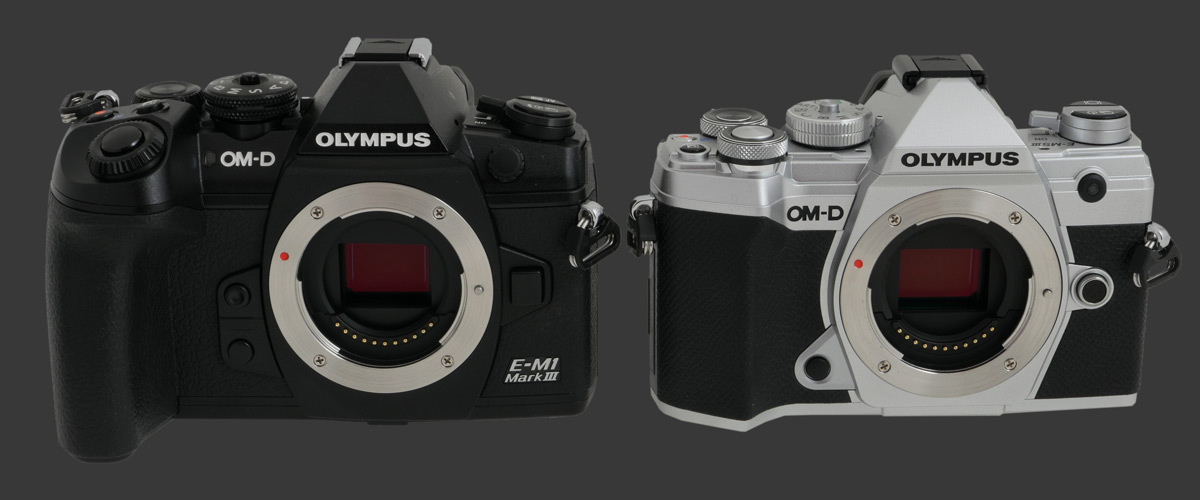
This mirrorless does not offer a built-in flash but supports external lighting via a standard hot-shoe and sync-port. An on-camera flash can be used as Wireless Commander for remote and multi-flash setups. Gone is the proprietary accessory-port with the E-M1 Mark III, giving a lower profile to the viewfinder hump. The built EVF itself is a 0.45" unit which shows 0.74X magnification and 100% coverage. It has an essential Eye-Start Sensor with just the right sensitivity and very short delay. The back of the camera features a rotating 3" touchscreen LCD that is more flexible than on its predecessor while appearing relatively durable.
Professionals are well-served by dual SDXC memory-card slots that are extremely configurable. One can use the cards for increasing storage, separating files by type or creating a real-time backup of all images. The only feature omitted from the dual-slot setup is that there is no way to delete images from both cards at once. With such a fast camera, memory can get filled up too quickly. To be fair, only a handful of cameras offers this.
Video features have exploded in the Mark III. This happens to be the first Olympus Micro Four-Thirds to record 4K video. It can do so in the standard Ultra-HD resolution which is 3840x2160 and has the same 16:9 aspect-ratio as HD video. It also supports the less-common 4096x2160 known as Cinema 4K that has a slightly wider aspect-ratio, only at 24 FPS instead of 30 FPS. Both video formats are stored at 100 Mbps in Quicktime format using the H.264 codec. The E-M1 Mark III adds extensive options for audio plus embedded time-code.
Olympus OM-D E-M1 Mark III Ergonomics - How easy is it to handle?
The Olympus OM-D E-M1 Mark III has a distinctively angular design with a narrow viewfinder hump that serves as platform for a standard hot-shoe. Previous generations of Olympus mirrorless had an accessory-port between the hot-shoe and EVF that made the camera taller. There is a deep grip with an indentation that provides a secure hold onto the camera. The grip is exceptionally tall yet narrow.
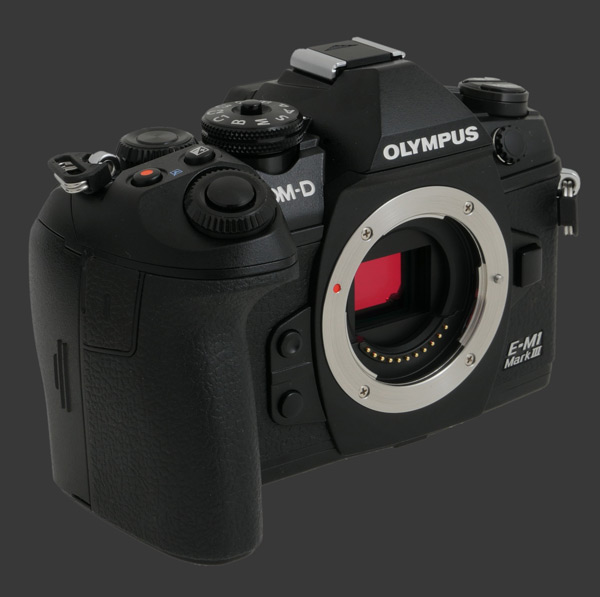
This mirrorless feels very solid with strong thick doors for the memory card and battery compartments. Even the rotating hinge is remarkably more sturdy than most. Olympus managed to make the entire body weathersealed and freezeproof. The body feels dense and has a notable weight for its size without being heavy. It is a tough camera that remains true to the promise of mirrorless even at a professional level.
Two round buttons between the grip and lens mount are unmarked and made customizable. There are over 30 functions to choose from, plus 4 of them invoke custom configurations. Olympus gave these buttons a different feel so that they can be recognized by touch. The subtlety is slight though, making it unlikely to distinguish while wearing gloves. The only thing remaining on the front is the lens release on the opposite side of the mount. When customizing these buttons, keep in mind that a number of exclusive features are not accessible without being assigned to one of them.
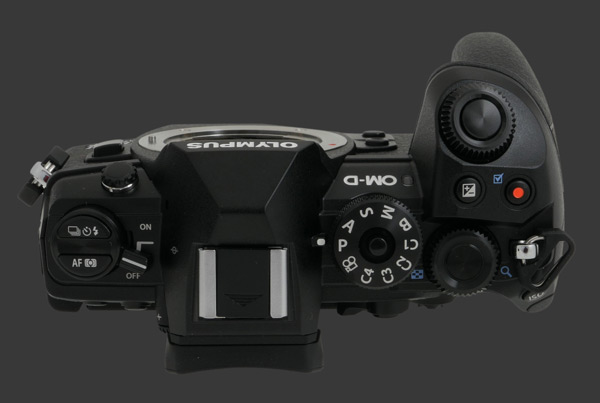
There are controls edge-to-edge on the top plate, including all over the grip. Mechanical controls occupy all space except for the hot-shoe. Several of these controls are customizable, include both control-dials that are mounted on the completely on the top plate. In fact, customization of these dual control-dials are exceptionally and vastly improved. They can be customized differently for each exposure mode, playback and menu navigation. Most importantly, they can be fully utilized with virtually no redundancy. In all exposure modes, they can control two distinct parameters. Even in P mode, one dial can shift exposure, while the other can set ISO.
On the left most edge, two buttons are mounted above the rotating power-switch. The front most button allows the front control-dial to change the Flash Mode while the rear dial sets the Drive Mode. The rear button does the same with Metering and Focus Mode, respectively. This time, instead of considering DMF a separate mode, a configuration option controls weather it is available all modes except MF and Preset Focus. The power switch is well tucked away from accidental changes and has a strong detent.
Jumping over the EVF housing, there is a traditional Mode Dial. It offers the standard PASM modes plus a separate position B for Bulb Exposure. There is also a dedicated Movie Mode and 4 Custom ones. The dial is very nice with strong detents and textured edge. Although unnecessary, a spring loaded button in the center of the Mode Dial firmly locks it in place. The dual control-dials mentioned above are also textured and have strong detents. They have a really sturdy feel to them.
Between both control-dials, one finds the customizable EC and Video Record buttons. EC can be set modally or modelessly and the camera automatically adapts to how the EC button is used. Thankfully, the Video Record button can be customized because it is otherwise superfluous. There is no point start to record video in Stills modes because framing is wrong and, in Video mode, the shutter-release can be used for filming instead. Each button can be customized to the same 30+ functions as those on the front of the camera.
In the middle of the front control-dial, there is a standard two-stage shutter-release. It has moderate travel with a soft halfway point. Accidentally taking a shot is possible but should not be a frequent occurrence. Olympus always offers plenty of customization options for the shutter-release, allowing the moment of autofocus and auto-exposure to be chosen precisely by focus mode.
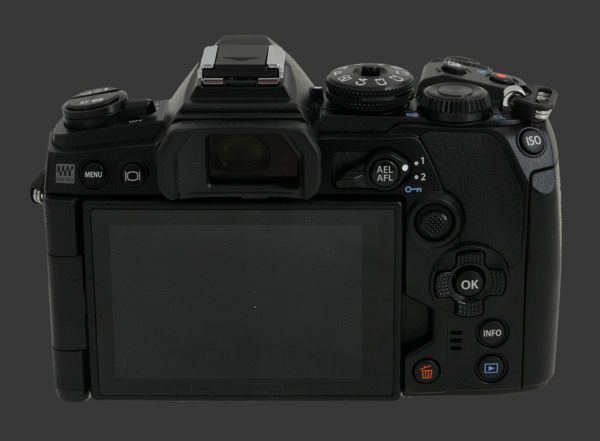
Every remaining control is packed onto the back of the camera which is completely covered except for a small thumb-rest. Two thirds of the back are occupied by a 3" LCD with 1 megapixels and touch-functionality. The display is mounted on an inconvenient rotating hinge which forces it to be folded outwards when shooting at a low or high angle, although it allows the screen to be reversed for protection. The LCD panel itself is really nice with good visibility, a great anti-reflective coating and a wide angle of view. Its color temperature and contrast can be fine-tuned.
There has been a reshuffling of buttons compared to the previous E-M1. A Menu and Display button are found above the top-left corner of the screen. These work exactly as expected. The center-piece so to speak is the 2.4 megapixels EVF with 0.74X magnification. This viewfinder is extremely sharp and looks huge. It is bigger than the OVF of most full-frame DSLRs. It shows contrast naturally and has an impressive dynamic-range. Users can choose between an extra-large view with overlays or one that is still large yet shows status information under the preview. Other customization options are available, with a clever one that shows the horizontal Digital-Level when the shutter-release is pressed halfway. A dual-axis Digital-Level can be overlaid too. An essential Eye-Start sensor automatically switches between the EVF and LCD when placing your eye close to the viewfinder.
Olympus introduced 2x2 Controls with the OM-D E-M5 and the E-M1 Mark III has a simplified version of the original. A 2-position lever on the right side of the EVF now offers 3 modes. In the first, the lever changes dual control-dial functions. The second, toggles between two focus modes, while the third switches between Stills and Video settings. The second option is the easiest to grapple with.
At the extreme top-right corner of the camera, there is a new direct ISO button. It works on all modes to cycle over every possible ISO sensitivity in 1/3 or 1 EV increments. Given how customizable the dual control-dials are, it is only needed in Manual mode. One oddity for those who prefer fractional ISO is that the increment does not follow EV steps which results in odd exposure parameters when using ½ EV steps for Aperture and Shutter-Speed but 1/3 steps for ISO.
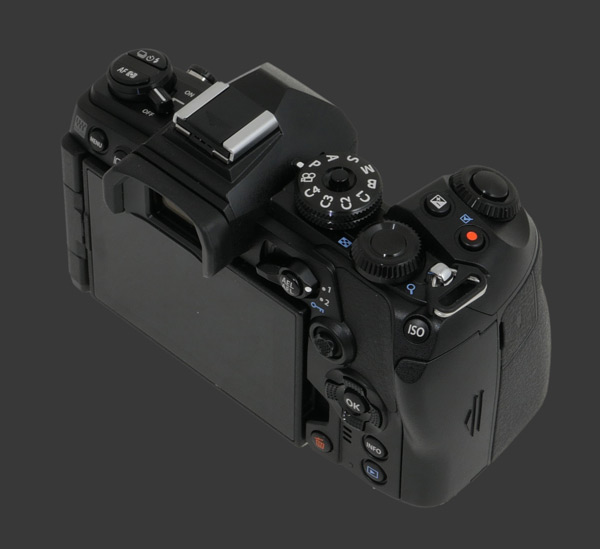
New to the Olympus OM-D E-M1 Mark III is an 8-way joystick found near the top-right corner of the LCD. It is located within easy reach of the thumb and moves the focus selection instantly. Pressing the joystick against the back of the camera returns the focus area to its Home Location which can itself be customized. The 4-way controller below it can also control the focus location, as it does on other Olympus mirrorless, or its Right and Down directions can be assigned a custom function. It is puzzling as to why the other two directions cannot be customized. The central OK button brings up one of two ways of quickly accessing certain camera features.
Further down, an Info button cycles over display options on the LCD or EVF, whichever is active at the time. Just below it, the Playback and Delete buttons operate just as expected. Neither is customizable and Delete cannot be used during Instant Review. Given that these buttons are so low on the body, they are somewhat uncomfortable to reach. One related annoyance is that the Eye-Sensor quits whatever screen is active. When using the camera at eye-level, one loses their place if you pull away to look at any button.
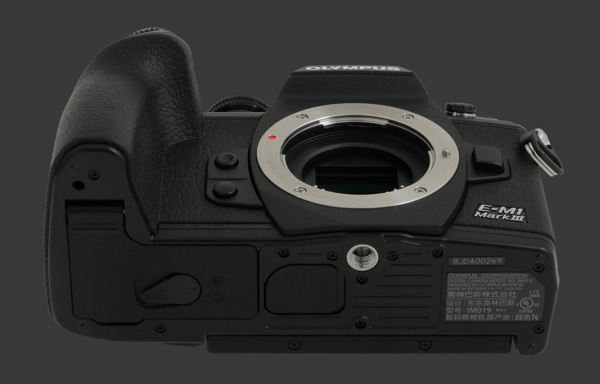
At the bottom of the camera, there is a standard tripod socket which is inline with the optical axis of the camera. This is best for panoramic photography, although the socket is placed rather forward on the body, reducing the friction between the camera and tripod or plate, if using one. A wide plastic door houses the large E-M1 Mark III battery. It is quite sturdy with a soft rubber gasket all around for weather-sealing.
On the grip-side of the body, a very solid door slides back before opening to access Dual SDXC memory-card slots. It shuts tight and has a thin more rigid gasket than the battery-compartment. The other side of the camera shows 3 rubber flaps. The top-most covers a mini-jack stereo input line, while the middle as a stereo output mini-jack. A larger flap below covers both a 4K Micro HDMI and a USB Type-C connector.
Ergonomics of this mirrorless camera are good with most controls within easy reach. After customization, it is likely that every common feature be efficiently accessible. The customization of control-dials really stands out as one of the most practical. Using the camera at eye-level is comfortable thanks to the EVF protruding from the back of the camera. The new placement of the Menu button though forces two-handed menu navigation but is a minor point.
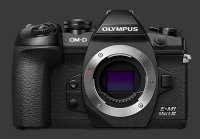 |
Please Support Neocamera
All information on Neocamera is provided free of charge yet running this website is a huge endeavor. Purchases made via affiliate links found throughout the site help keep it running and up-to-date. There is no additional cost to you, so please consider buying via these links to our affilates:
If you found any information on this site valuable and did not purchase via our affiliate links, please considering donating via PayPal:
Any amount will be greatly appreaciated. Thank you for your support!
Olympus E-M1 Mark III Highlights

Sensor-Size: 17 x 13mm

Actual size when viewed at 100 DPI
| 20 Megapixels Mirrorless | ISO 64-25600 |
| Micro Four-Thirds Mount 2X FLM | Shutter 1/32000-60s |
| 5-Axis Built-in Stabilization, 7-Stop Improvement | Full manual controls, including Manual Focus |
| 0.50" Built-in EVF 2.4 Megapixels (0.74X) | Custom white-balance with 2 axis fine-tuning |
| Automatic Eye-Start sensor | Spot-Metering |
| 2 Axis Digital Level | Hot-Shoe & Sync-Port |
| Weatherproof down to -10C | Stereo audio input |
| Built-in Dust Reduction | Lithium-Ion Battery |
| 60 FPS Drive, 50 Images | Secure Digital Extended Capacity x 2 |
| 4096x2160 @ 24 FPS Video Recording | |
| 3" LCD 1 Megapixels |
Updates
2024.04.03

Fujifilm X-T5 Review
Newest Fujifilm flagship boasting a 40 MP APS-C sensor, 5-axis IBIS with 7-stop efficiency, 15 FPS continuous drive, 6.2K Video capture, dual control-dials and dual SDXC UHS-II slots in a sturdy weatherproof and freezeproof body.
2023.11.20

Best Digital Cameras of 2023
Find out which are the Best Digital Cameras of 2023. All the new Mirrorless Digital Cameras from entry-level to high-end professional.
2023.07.10

Fujifilm X-H2 Review
40 Megapixels APS-C Hybrid Mirrorless Digital Camera with 7-stop IBIS. Fastest shutter ever and 8K video capture. Large builtin EVF with 0.8X magnification and 5.8 MP, plus an Eye-Start Sensor. Packed with features and large number of controls in a weatherproof and freezeproof body.
2023.05.07

Sony FE 20-70mm F/4G Review
Review of the unique Sony FE 20-70mm F/4G lens. The optical zoom of this lens spans ultra-wide-angle and medium focal-length coverage, making it one of the most versatile Full-Frame lenses on the market.
2023.01.15

Huion Inspiroy Dial 2 Review
Review of the Huion Inspiroy Dial 2 tablet, a medium sized drawing surface with dual dials and customizable buttons. Connects via USB-C or Bluetooth 5.0 with Windows, Linux and Android support.
2022.12.08

How to Pack for a Photo Trip
Find out how to pack for a travel photography trip, carry your gear safely while meeting airline regulations.
2022.11.13

Best Digital Cameras of 2022
The best digital cameras of 2022. A short list of the most outstanding models in their respective categories. Choose one for yourself or as a gift.
2022.09.21

Pentax DA* 60-250mm F/4 SDM Review
Review of the Pentax DA* 60-250mm F/4 SDM, the constant-aperture telephoto zoom with the highest zoom-ratio on the market.
2022.09.20

Pentax DA* 50-135mm F/2.8 SDM Review
Review of the Pentax DA* 50-135mm F/2.8 SDM, the lightest professional telephoto zoom native to the K-mount.
2022.09.10

Pentax DA* 11-18mm F/2.8 DC AW Review
Review of the Pentax DA* 11-18mm F/2.8 DC AW, the widest professional ultra-wide zoom native to the K-mount.
2021.11.24

50 Gifts Under $50 For Photographers in 2021
50 Gifts photographers will love. All for under $50 USD. 2021 Edition.
2021.11.17

Best Digital Cameras for 2021
Neocamera shows which are the very best Digital Cameras for 2021 in every category: Mirrorless, DSLR, Premium Compact, Ultra-Zoom and Rugged.



